Abstract
Hirota, Yukinori (Osaka University, Osaka, Japan), Yukinobu Nishimura, Frits Ørskov, and Ida Ørskov. Effect of drug-resistance factor R on the F properties of Escherichia coli. J. Bacteriol. 87:341–351. 1964.—Infection of Escherichia coli male cells (Hfr or F+) with resistance factor R results in the co-ordinate inhibition of several distinct functions of F factor: mating capacity to transfer chromosome by conjugation, production of f+ antigen, and formation of receptors for the male-specific bacteriophages, f1 and ribonucleic acid phage. The i− mutant (R100−1) of R factor, which was isolated from wild-type R factor (R100), shows no inhibition of these F properties. Male R+100−1 cells were autoagglutinable but the f+ antigen was still present. When R-infected female cells had acquired the ability to form recombinants with an F− strain, they also had become autoagglutinable. The question of the presence of f+ antigen in these strains was not solved. The cause of the autoagglutinability is not known, but it is not the result of loss of O antigen (rough autoagglutinability). Sensitivity to a phage tau, which can form plaques on female cells only, is not affected by the presence or absence of R factor. No difference in the pattern of segregation of recombinants was observed between the cross of Hfr R− × F− and that of Hfr R+ × F−. These results indicate that R factor controls a key mechanism in the synthesis of “F substances” formed on the cell surface by the F factor.
Full text
PDF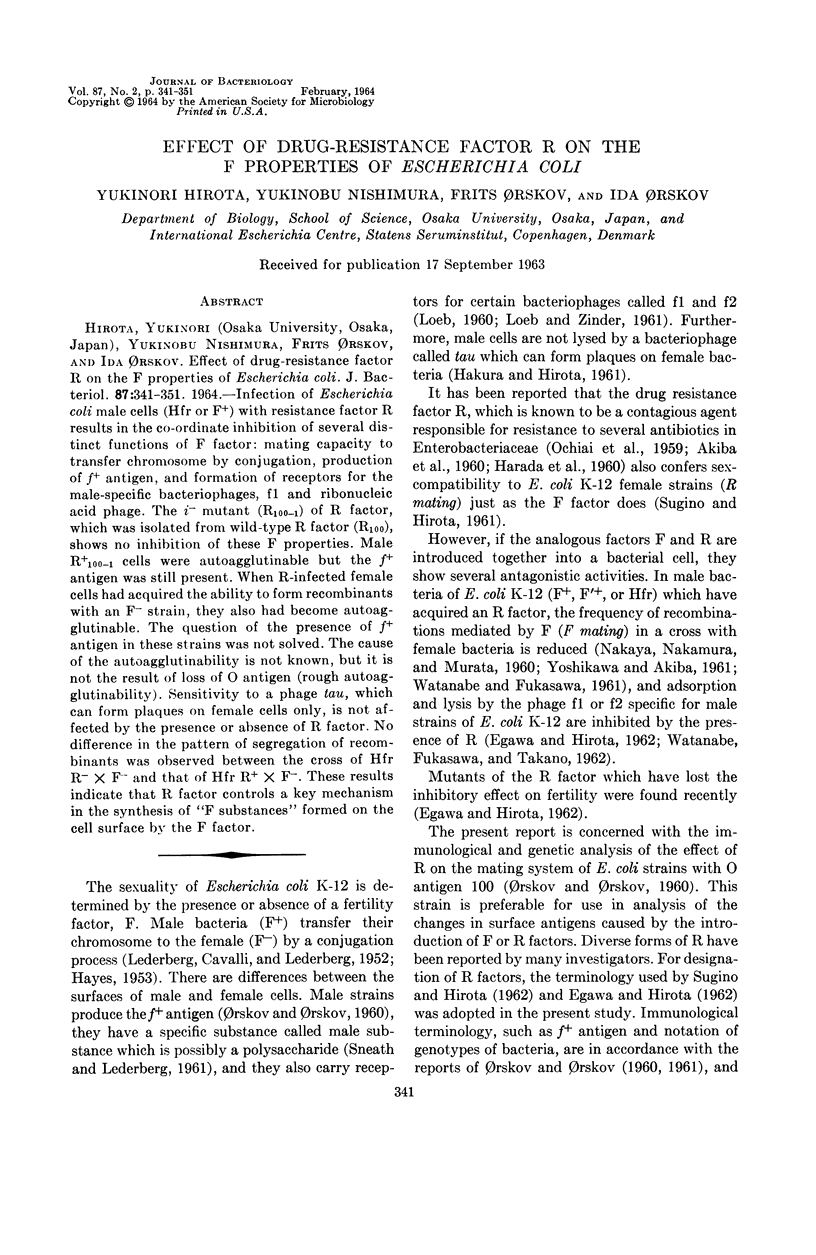
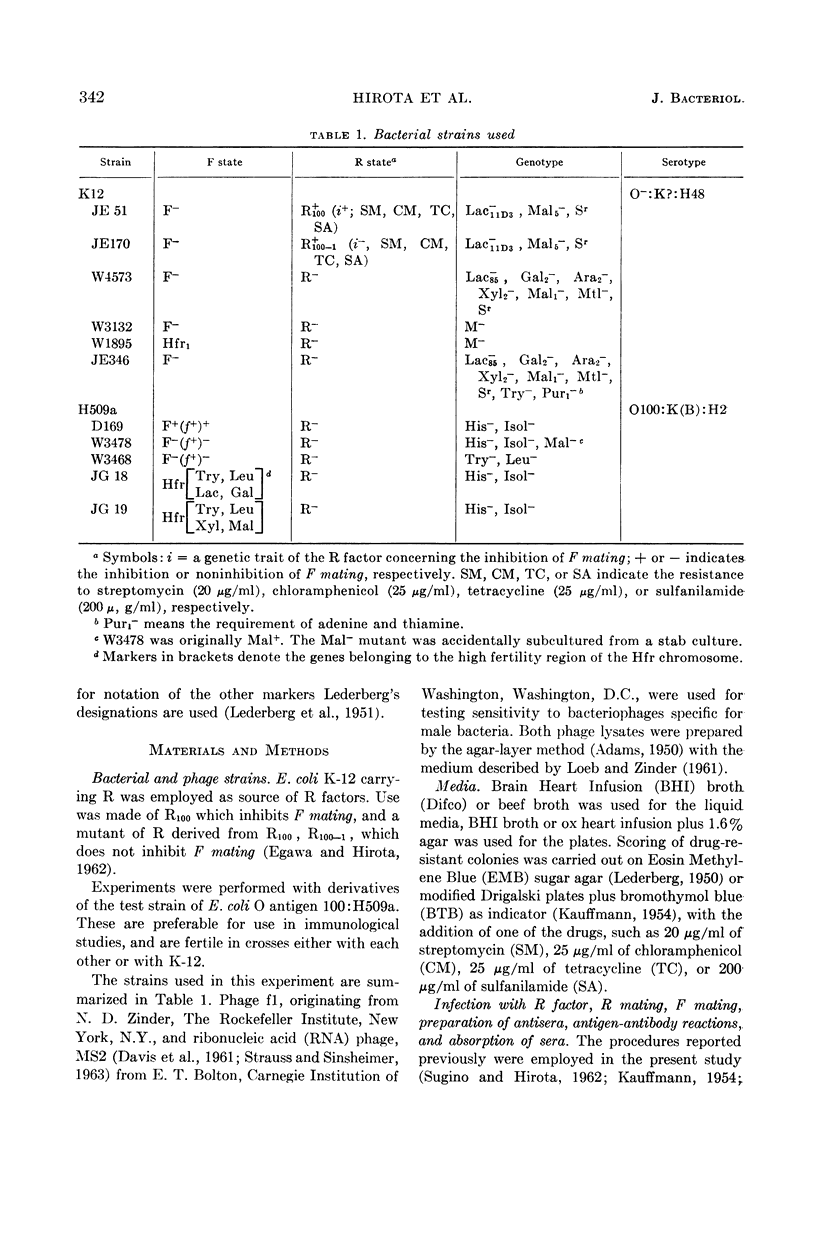
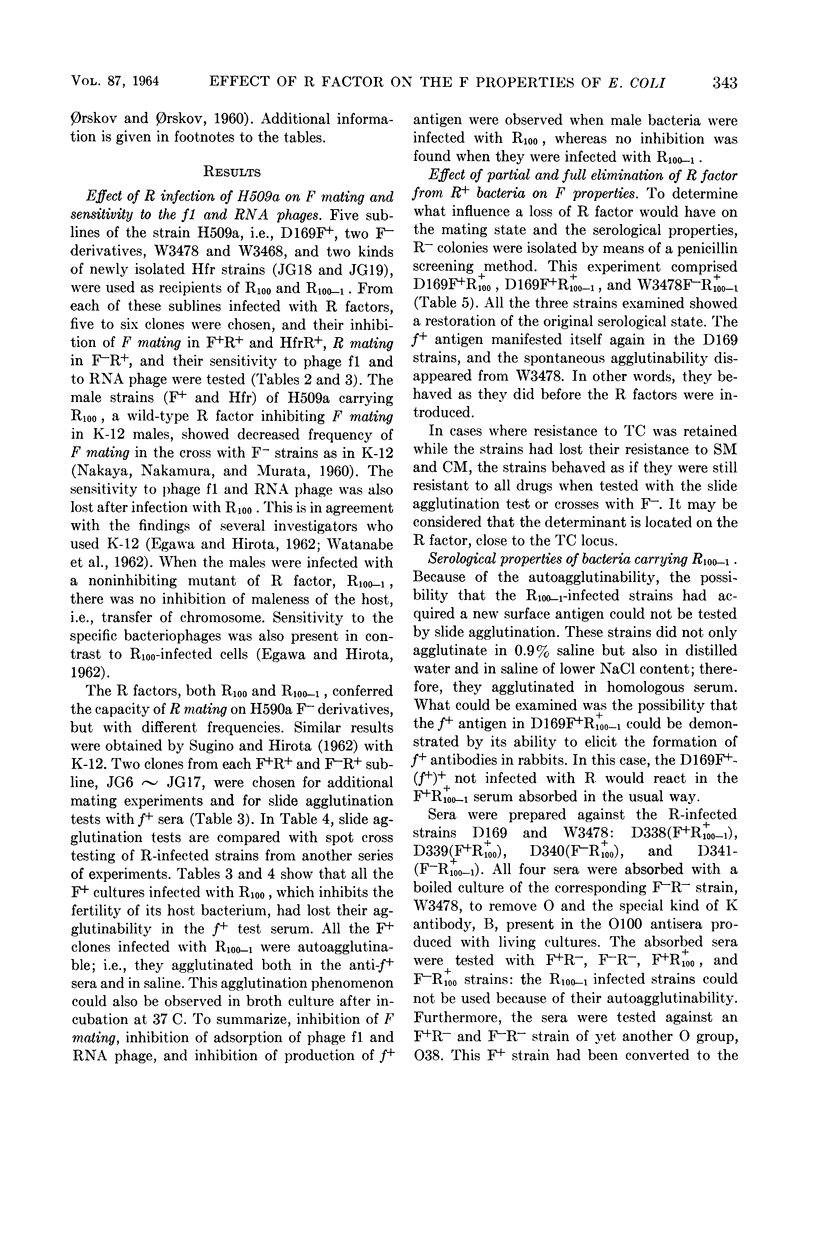
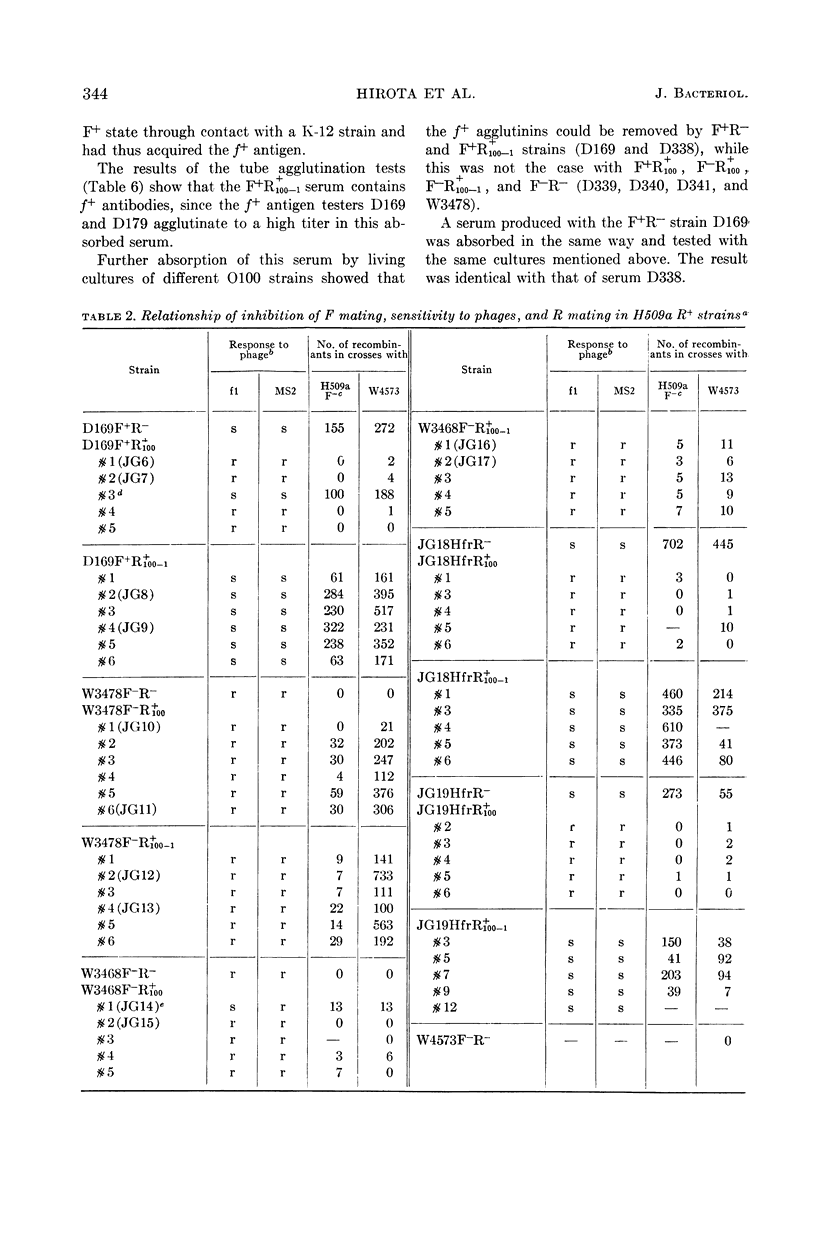
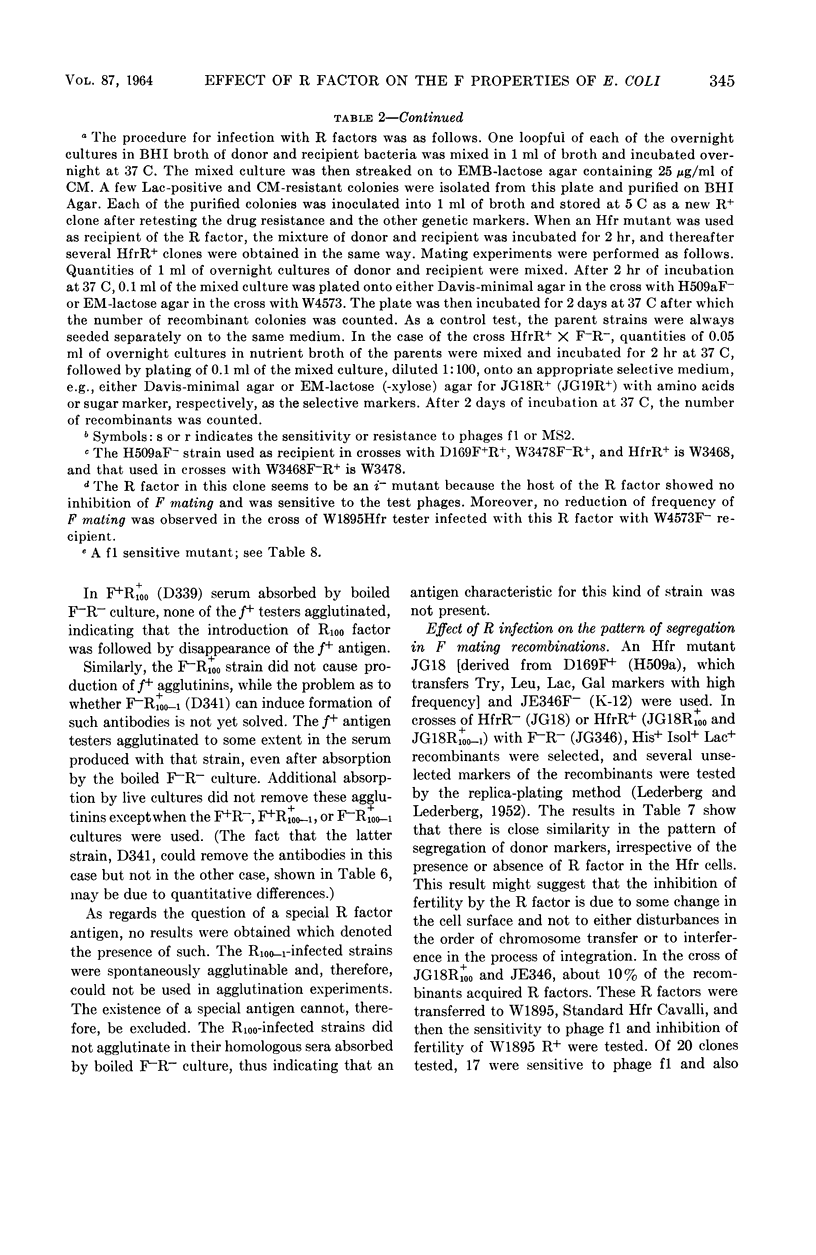
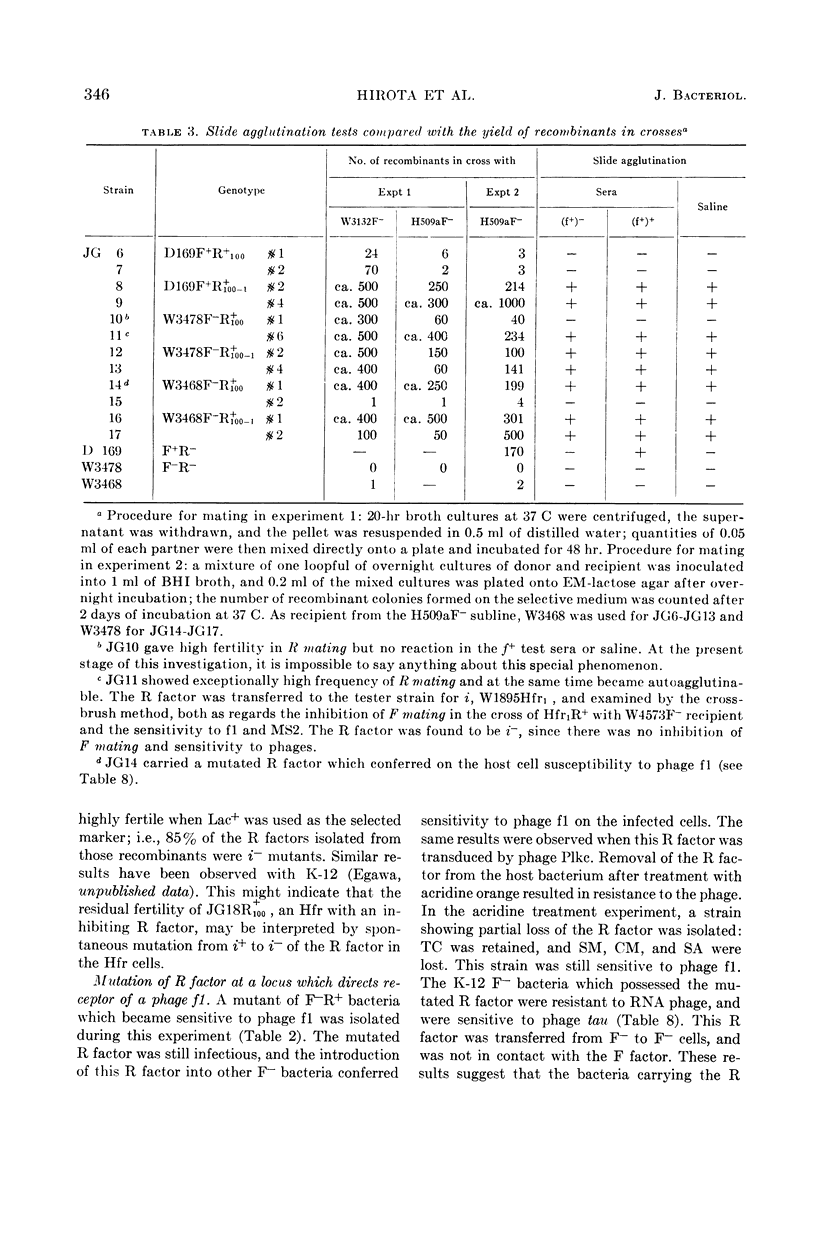
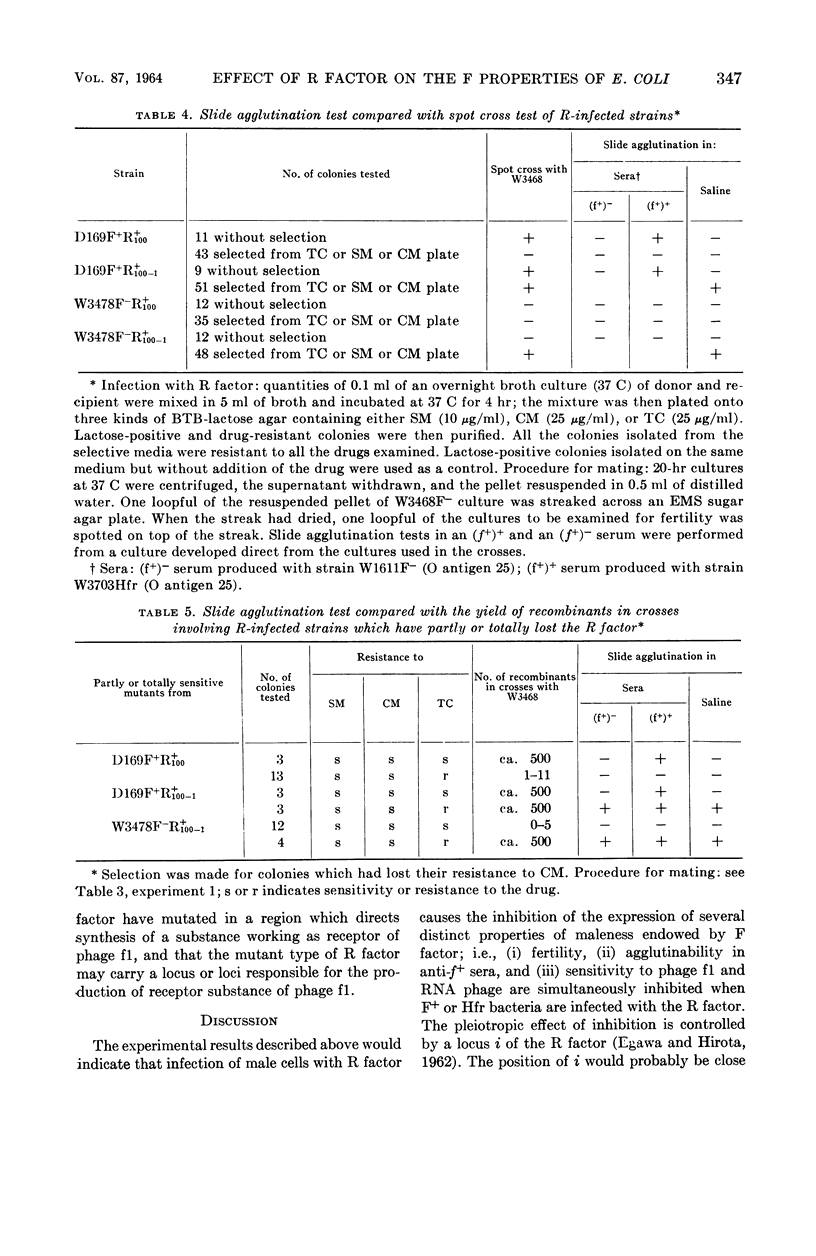
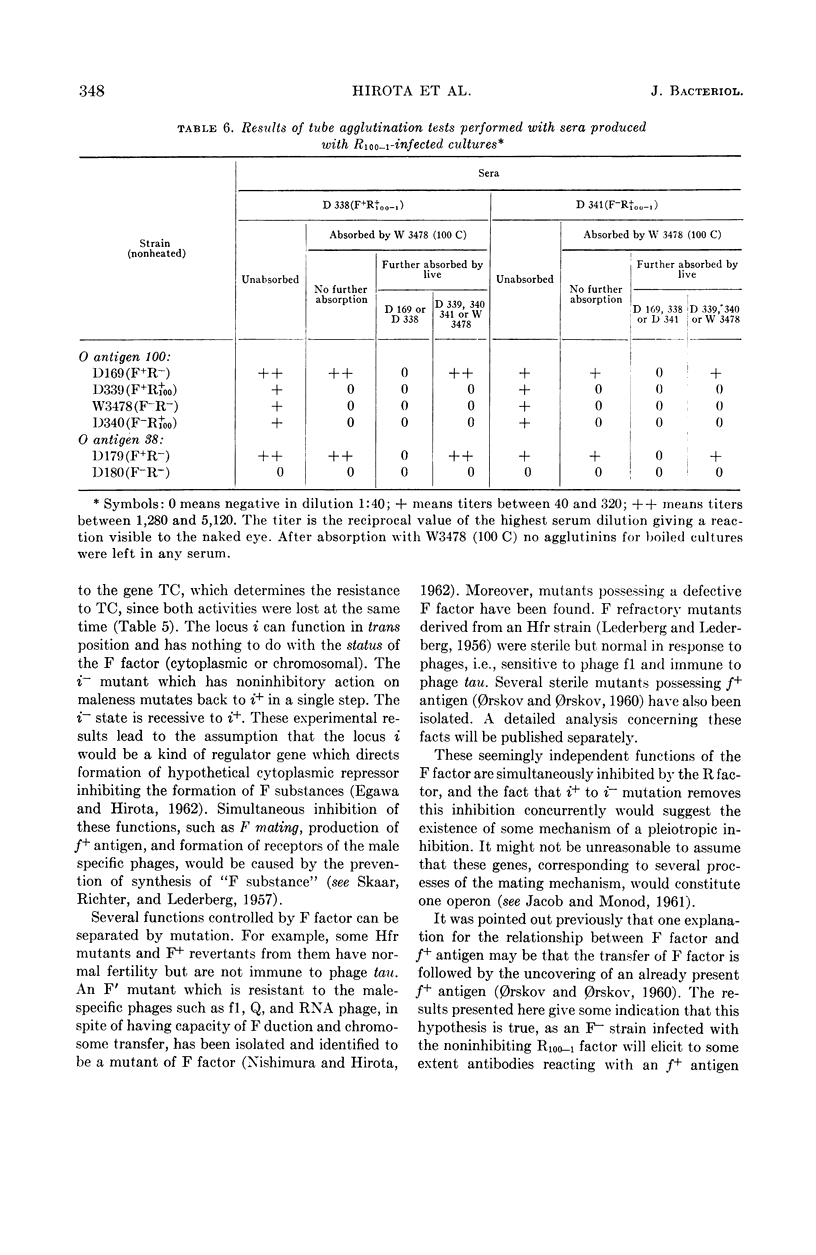
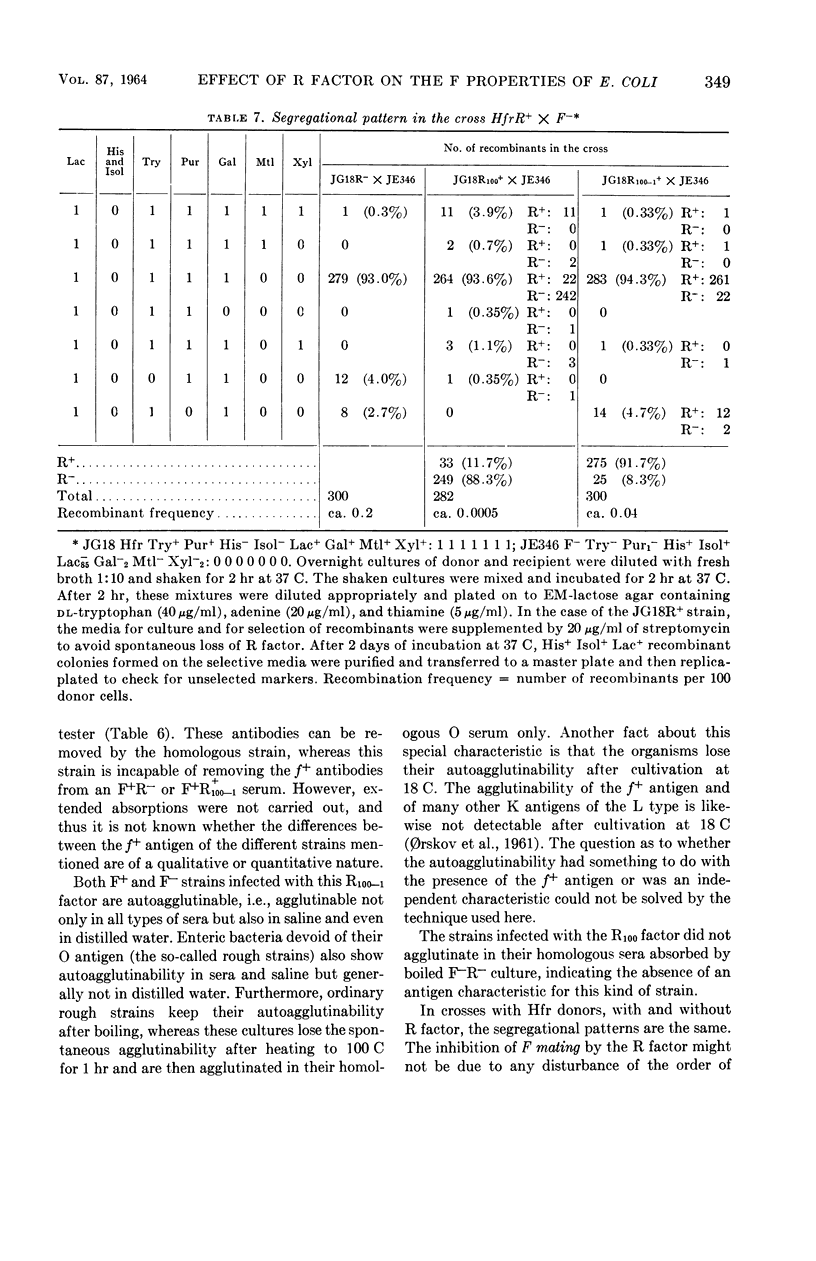
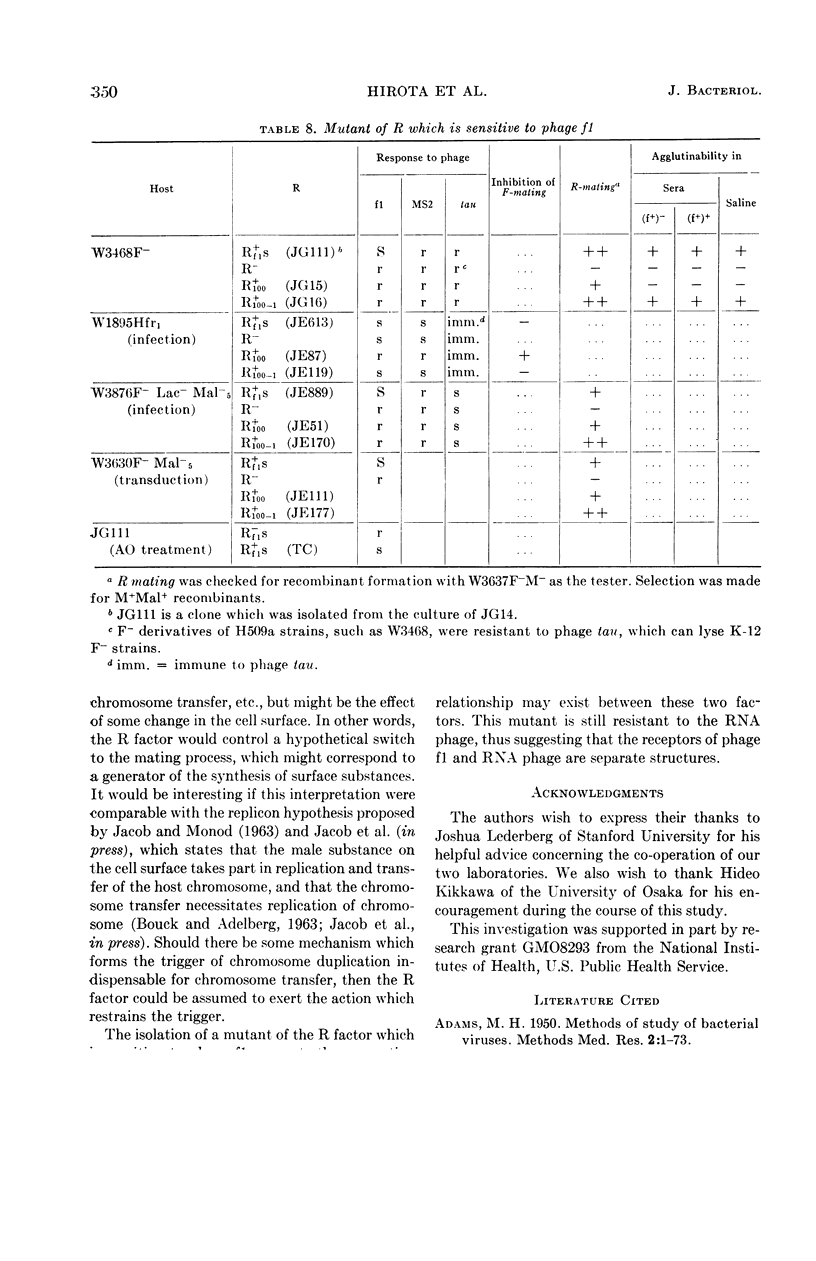
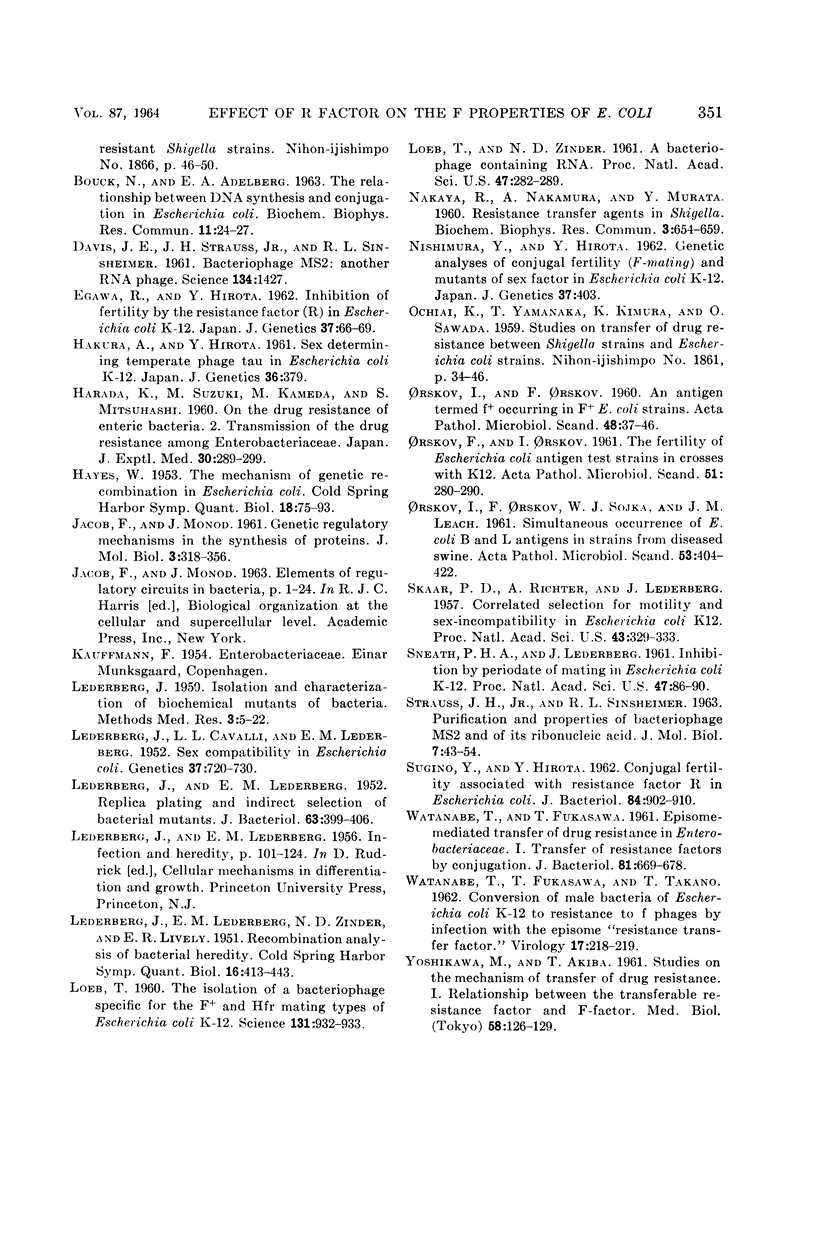
Selected References
These references are in PubMed. This may not be the complete list of references from this article.
- BOUCK N., ADELBERG E. A. The relationship between DNA synthesis and conjugation in Escherichia coli. Biochem Biophys Res Commun. 1963 Apr 2;11:24–27. doi: 10.1016/0006-291x(63)90021-4. [DOI] [PubMed] [Google Scholar]
- HARADA K., SUZUKI M., KAMEDA M., MITSUHASHI S. On the drug-resistance of enteric bacteria. 2) Transmission of the drug-resistance among Enterobacteriaceae. Jpn J Exp Med. 1960 Aug;30:289–299. [PubMed] [Google Scholar]
- HAYES W. The mechanism of genetic recombination in Escherichia coli. Cold Spring Harb Symp Quant Biol. 1953;18:75–93. doi: 10.1101/sqb.1953.018.01.016. [DOI] [PubMed] [Google Scholar]
- JACOB F., MONOD J. Genetic regulatory mechanisms in the synthesis of proteins. J Mol Biol. 1961 Jun;3:318–356. doi: 10.1016/s0022-2836(61)80072-7. [DOI] [PubMed] [Google Scholar]
- LEDERBERG J., LEDERBERG E. M. Replica plating and indirect selection of bacterial mutants. J Bacteriol. 1952 Mar;63(3):399–406. doi: 10.1128/jb.63.3.399-406.1952. [DOI] [PMC free article] [PubMed] [Google Scholar]
- LEDERBERG J., LEDERBERG E. M., ZINDER N. D., LIVELY E. R. Recombination analysis of bacterial heredity. Cold Spring Harb Symp Quant Biol. 1951;16:413–443. doi: 10.1101/sqb.1951.016.01.030. [DOI] [PubMed] [Google Scholar]
- LOEB T. Isolation of a bacteriophage specific for the F plus and Hfr mating types of Escherichia coli K-12. Science. 1960 Mar 25;131(3404):932–933. doi: 10.1126/science.131.3404.932. [DOI] [PubMed] [Google Scholar]
- LOEB T., ZINDER N. D. A bacteriophage containing RNA. Proc Natl Acad Sci U S A. 1961 Mar 15;47:282–289. doi: 10.1073/pnas.47.3.282. [DOI] [PMC free article] [PubMed] [Google Scholar]
- Lederberg J, Cavalli L L, Lederberg E M. Sex Compatibility in Escherichia Coli. Genetics. 1952 Nov;37(6):720–730. doi: 10.1093/genetics/37.6.720. [DOI] [PMC free article] [PubMed] [Google Scholar]
- NAKAYA R., NAKAMURA A., MURATA Y. Resistance transfer agents in Shigella. Biochem Biophys Res Commun. 1960 Dec;3:654–659. doi: 10.1016/0006-291x(60)90081-4. [DOI] [PubMed] [Google Scholar]
- ORSKOV I., ORSKOV F., SOJKA W. J., LEACH J. M. Simultaneous occurrence of E. coli B and Lantigens in strains from diseased swine. Influence of cultivation temperature. Two new E. coli Kantigens: K 87 and K 88. Acta Pathol Microbiol Scand. 1961;53:404–422. [PubMed] [Google Scholar]
- STRAUSS J. H., Jr, SINSHEIMER R. L. Purification and properties of bacteriophage MS2 and of its ribonucleic acid. J Mol Biol. 1963 Jul;7:43–54. doi: 10.1016/s0022-2836(63)80017-0. [DOI] [PubMed] [Google Scholar]
- SUGINO Y., HIROTA Y. Conjugal fertility associated with resistance factor R in Escherichia coli. J Bacteriol. 1962 Nov;84:902–910. doi: 10.1128/jb.84.5.902-910.1962. [DOI] [PMC free article] [PubMed] [Google Scholar]
- Skaar P. D., Richter A., Lederberg J. CORRELATED SELECTION FOR MOTILITY AND SEX-INCOMPATIBILITY IN Escherichia Coli K12. Proc Natl Acad Sci U S A. 1957 Apr 15;43(4):329–333. doi: 10.1073/pnas.43.4.329. [DOI] [PMC free article] [PubMed] [Google Scholar]
- Sneath P. H., Lederberg J. INHIBITION BY PERIODATE OF MATING IN ESCHERICHIA COLI K-12. Proc Natl Acad Sci U S A. 1961 Jan;47(1):86–90. doi: 10.1073/pnas.47.1.86. [DOI] [PMC free article] [PubMed] [Google Scholar]
- WATANABE T., FUKASAWA T. Episome-mediated transfer of drug resistance in Enterobacteriaceae. I. Transfer of resistance factors by conjugation. J Bacteriol. 1961 May;81:669–678. doi: 10.1128/jb.81.5.669-678.1961. [DOI] [PMC free article] [PubMed] [Google Scholar]
- WATANABE T., FUKASAWA T., TAKANO T. Conversion of male bacteria of Escherichia coli K12 to resistance to f phages by infection with the episome "resistance transfer factor". Virology. 1962 May;17:217–219. doi: 10.1016/0042-6822(62)90108-3. [DOI] [PubMed] [Google Scholar]


